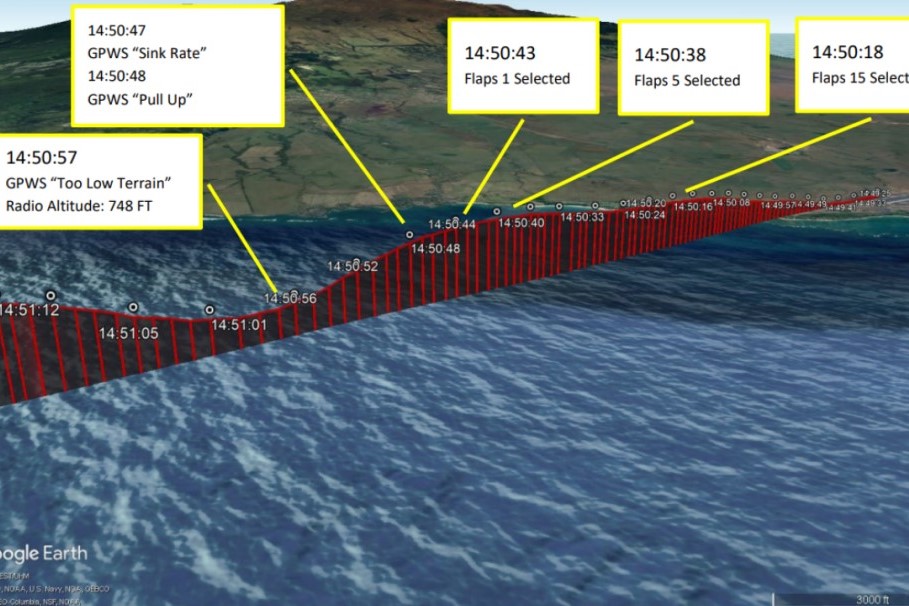The United States (US) National Transportation Safety Board (NTSB) has published its report about an incident when a United Airlines Boeing 777-200 suddenly lost altitude upon takeoff from Kahului Airport (OGG), Kahului, Hawaii, the US in December 2022.
According to the report, United Airlines flight UA1722, operated by a Boeing 777-200 registered as N212UA, departed OGG under instrument meteorological conditions, with heavy rain present at the airport. Before taking off, the crew initially planned for a takeoff with flaps-20 and a reduced-thrust setting. However, as the twin-aisle aircraft was taxiing, the air traffic controller responsible for ground traffic warned about “low-level windshear advisories” at OGG.
As a result, the pilots changed the departure configuration to flaps-20 with maximum thrust. The captain, as the pilot flying (PF), flew the aircraft manually when it took off from the Hawaiian airport with the autothrottles being engaged. At first, the flight continued without incident but during the initial climb stage, the aircraft encountered turbulence and the crew noticed airspeed fluctuations.
Misheard instructions
Subsequently, PF reduced the pitch altitude slightly at the acceleration altitude and called for flaps to be reduced to 5. But the first officer, who was the pilot monitoring (PM), misheard the captain’s instructions and moved the flaps setting to flaps-15.
“The captain noticed that the maximum operating speed indicator moved to a lower value than expected, and the airspeed began to accelerate rapidly,” the NTSB’s report continues. The PF reduced the engines’ thrust manually, overriding the autothrottle to avoid flap overspeed, and began looking at the problem concerning the flaps when he noticed the incorrect flap setting.
After repeating his flaps-5 instruction, the first officer moved the flaps to the correct position. Knowing that the PF might be having difficulties with airspeed control, the PM asked the captain about the matter without receiving a response. During an interview with the NTSB, both pilots said that the Boeing 777-200’s pitch altitude was decreasing, while the airspeed was increasing.
Shortly after moving flaps to 5, the captain asked the flaps to be moved to flaps-1, which the first officer proceeded to do.
At this point, both pilots told the NTSB that they heard warnings from the ground proximity warning system or GPWS, with the PM saying the ‘pull up’ command along with the GWPS’ warning sounds. The captain pulled aft on the control column, reduced power, and then applied full power to proceed with the controlled flight into terrain (CFIT) recovery procedure. The GPWS warning sounded again, with the NTSB noting that this occurred at 748 feet (227.9 meters) above water.
According to flightradar24.com data, the aircraft descended from 2,200 ft (670.5 m) of altitude to 775 ft (236.2 m) in no more than a minute with a peak vertical speed of -8,192 feet per minute (FPM).
The NTSB determined that the probable cause of the incident was the pilots’ failure to manage the aircraft’s vertical flight path, as well as airspeed and pitch altitude after the miscommunication that resulted in the incorrect flaps setting during the initial climb.
As a result of the incident, United Airlines made changes to its operations training modules to “address this occurrence and issued an awareness campaign about flight path management at their training center,” the NTSB noted.
The flight landed at its destination, San Francisco International Airport (SFO), without further incident. None of the 281 people onboard, including 10 crew members, were injured during the incident.

